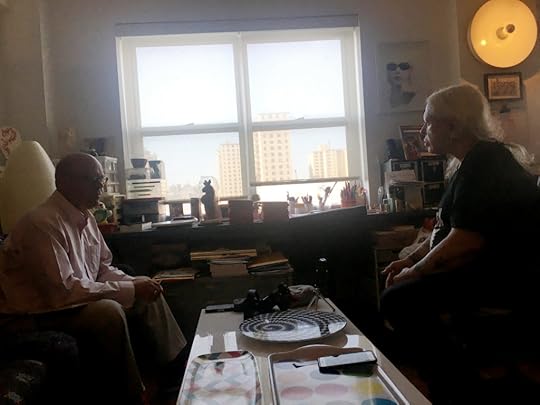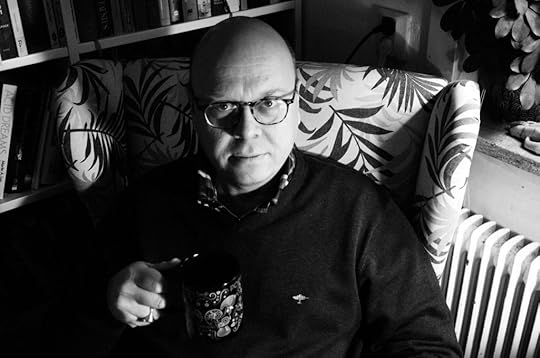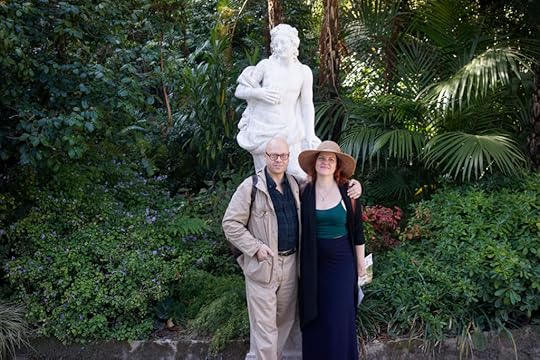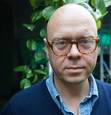Carl Abrahamsson's Blog, page 48
March 13, 2019
Geographical Initiation
Traveling all over the world; into deepest Africa and highest Asia, into the plainest plains of Europe and most lush jungles of South America, into the deserts of North Africa and Australia, and into the icy coasts of the Poles.
What is there to see? Everything. Nothing. What is my function here? The same as everywhere else: to go, to do, to make, to make up, to assemble the documentation. The magic of a geographical initiation: to show up and take in, then take off and show off. Then reframe whatever we’re attracted to and share it as art in many different forms, shapes and sizes.
And here we get to the essence of this train of thought: what if…? What if I were somewhere with no tools of documentation whatsoever? Would the experience still mean something if it weren’t potentially possible to share? Would I be interested in seeing without access to my camera? Would I be interested in memorising details without access to pen and paper?
Or is this only another pathology cloaked in the exotic?
March 7, 2019
A Carl & Genesis P-Orridge 12″ available on pre-order
On April 19th, Ideal Recordings release Loyalty Does Not End With Death, the new album by Genesis Breyer P-Orridge and me. There are two extra tracks from the album sessions, and these have been turned into a 12″, also by Ideal. And this beautiful vinyl record is now available on pre-order (the actual release coincides with the album release). It’s going to sell out quickly, so please act fast.
You can order your limited edition 12″ HERE!
I am very excited about this adventure of course, so I made this video with material from the archives which was shot 30 years ago… Firefly’s Last Spark is a track off the album. This little film will hopefully keep you going until the album proper arrives.
The photograph of me and Gen in New York was taken by Vanessa.
Genesis Breyer P-Orridge & Carl Abrahamsson: Firefly’s Last Spark from Carl Abrahamsson on Vimeo.
March 6, 2019
Confessions from the corner
I have often been accused of being an “armchair magician.” The accusation always misses its target though. Because to me, it sounds like an absolute ideal. Actually, it’s an ideal that I strive for daily.
I am a magician. I have an armchair. The only problem (sorry, “challenge”) is that I’m not as fully situated in the armchair as I want to be. Yet.
Where critics create the metaphor to indicate someone who’s not out there in the “real” world, I would reverse it and state publicly that the greatest accomplishment for me would be to direct all the magical forces straight from my lovely chair. That is the ultimate reality.
My armchair comes from IKEA but looks “retro”/vintage in its design. It has a floral pattern and is situated in one corner of our library. The walls are covered from floor to ceiling with books that inspire me daily, and very tangibly so. I get my ideas here. I read here. I write here. I snooze and fantasise here.
Actual “temple” or ritual work is but an extension of the magical labor and formulations stemming from the armchair. Ritual is mostly necessary as an “intellectual decompression,” a temporary discharge of a continual charge.
To my right is my library desk. To my left is my wife’s armchair. Absolutely straight ahead is a door leading to the outside. Being positioned in a corner in my own armchair gives me the best vantage point I could ever think of; my own bookish Shambala.
I ingest the accusations and, on a good day, wish that the critics will one day find their own four-legged chariot. There’s so much magic in the library. I strive to become an ever more actively present part of it, as a real, solid, bona fide armchair magician.
February 27, 2019
Lifestyles of the which and infamous
What of the sayings that sounded so good once upon a time but then became ridiculed as “square,” “straight,” “corny,” etc (take your pick of colloquialism based on when you grew up!)? I’m thinking for instance of Benjamin Franklin’s “Early to bed, early to rise, makes a man healthy, wealthy and wise.”
This surely still promotes a great work ethic that could be said to function, doesn’t it? Well, actually I’m not so sure anymore. As we nowadays know, health has a lot to do with genetics, and a controlled regulation of the hours of the day doesn’t automatically bring wealth. And what of that wisdom? My own wisest thoughts usually appear very, very late at night.
Contemporary usage of pseudo-moralistic sayings like Franklin’s seems to be a kind of longing for apparently/allegedly successful, almost prophetic wisdom. Longing for something somehow proven workable by frequent usage. But the work ethic of yesteryear can very likely not be superimposed on our own weird and dramatically irregular, irrational times.
People today make fortunes out of intangible constructions and digital enigmas based on human vanity, and most of it comes out of a generation of what the older folks would surely call “slackers.” But it doesn’t matter in the long run because the slackers’ excessive profits will be sucked up (and disappear) into “crypto-currencies” that are as intangible and evanescent as their other mastermind constructions. However, I’m sure they’ll have a lot of fun while gradually realising how fickle their fate actually is.
The young ones who, lacking a crypto-currency fortune, waste their old time work ethic on an employer who doesn’t give a damn (never have, never will), will gradually realise something considerably more bitter, and so eloquently paraphrased by the great James Thurber: “Early to rise, early to bed, makes a male healthy and wealthy and dead.”
February 20, 2019
The age of demagogia
Who’s got the loudest mouth? Look for the one who feels most neglected. Who’s got the foulest mouth? Look for the one who feels no-one will listen to reason, or who inherently knows he or she has nothing reasonable to convey.
“Empty barrels make the most noise” is an old and very apt saying that is today more relevant than ever in the public and political spheres. Give a moron a social media platform and havoc can swiftly and easily be wrought.
This is the age of blatant compensation. Not because there’s more of it nowadays but because the civilised surface of courtesy and intelligence has been strategically polished off by grinding down general education and revving up escapist entertainment.
If you “empower” a baby into thinking it’s an adult, everyone will soon be eating candy 24/7. And woe to anyone who tries to change the menu! The result will very soon be malnourishment, dental cavities and diabetes. And mood swings galore!
This is when the adults should just say no, give the kids some toys and move them to a designated and safe area. Maybe then they will grow up to become decent and functional human beings, capable of interacting with others, or maybe they won’t.
No matter what: kids will be kids!
February 13, 2019
Reality in the making
The majority of entertainment in the western cultural sphere todays seems to be dealing with American dysfunctionality and self destruction. Whether in humorous or violently terrifying form, it all boils down to one cultural sphere basking in its own downfall.
Sure, one could argue that it’s hard to create attractive myths or stories based on total harmony and a happy sense of complacency/complacent sense of happiness.
But on the other hand, America is also the promised land of unfulfilled promises, and therefore of advertising. Americans know very well that a repeated untruth eventually becomes if not a truth then at least a sale. Meaning: if American media/entertainment programmers actively brought in more intelligent and life-affirming content, perhaps their society would change for the better?
(I just realised that the previous paragraph is almost criminally naïve!)
Perhaps the world will soon be able to watch an entire nation roll over the final hurdle on its way towards extinction? A culture which immerses itself in such a massive expression of dysfunctionality and self destruction only has one trajectory: great ratings all the way to the very end!
The rest of the world should learn from this. Fictional portrayal is part momentary entertainment and (big) part cultural/societal programming. Let’s flaunt our own functionality for the world to see. Reality requires fiction. And fiction is always reality-in-the-making. Such a simple formula, really, yet seemingly so hard to integrate.
Perhaps it’ll be boring? Perhaps it’ll be inspiring?
February 6, 2019
Altruistic Selfishness
In an increasingly chaotic world (or so it seems), it’s always best to focus on things you know with certainty have a tangible value for you, before delving out as a contemporary don Quixote on the evanescent barricades of social media.
These things probably are/should be ultra-personal, and hence you should perhaps indulge in private rather than spilling all your beans publicly. This in itself is a challenge in such a flaunting culture as ours. But that’s exactly why it’s extra important.
When someone asks you what you’ve done for others/the world today, either lie and say “nothing,” or tell the truth if that’s more comfortable. You may have masturbated, had sex with someone, cleaned the house, listened attentively to your favourite record, read a great book, etc. Something that is of no apparent utilitarian use to anyone else but you.
Why is this more important than engaging in ambitious problem-solving in these times of global crises? Because it genuinely makes you happier. If you are indeed engaged in altruistic work and efforts, that’s great as long as it’s not only a lifestyle accessory. It needs to be an honest endeavour to have meaning and value – just like masturbation.
It’s the indulgence in making your innermost fantasy a satisfying, tangible reality (albeit temporarily) that creates meaning in life. Integrating that meaning in your daily existence is an irrevocably efficient way to create a much better and happier world.
Genuine general altruism never stems from frustrated individual sources. Therefore never believe any one demagog who’s frustrated or not successful at what they claim makes them happy.
Have they not masturbated enough lately? Have you?
February 2, 2019
Cut To Fit The Mouth documentations
On January 12, 2019, we opened our exhibition Cut To Fit The Mouth at Galleri Granen in Sundsvall, Sweden, with a performance at the gallery.
Vanessa read from the actual cut-ups from the exhibited images, and I read new poems written that very same day. Poetry in motion!
It was a wonderful ending of a two day process. During the first day we arrived at Sundsvall and hung the exhibition before delving into curator Kristian “Alfarmania” Olsson’s great studio to record with him (more on that will follow soon). Day two was the opening proper, which meant mingling and talking to people about our art and what we do, etc. Very nice. And as afternoon drifted into evening, we performed for the assembled crowd, illuminated by a cinematic medley of our many short films.
I was busy mixing the music but when I looked up I could see Vanessa lit up both by her own poetry and by the video projector’s multicoloured prism-rays. A beautiful sight.
As usual during circumstances like this one, we performed a short set of approximately 23 minutes, and it felt like the perfect length this evening. Always leave them wanting more.
We have made six of the images from this exhibition available in a less expensive edition (than the original artworks). Each image in six numbered and signed prints. More information about this edition can be found HERE. This is also where you can buy the cassette edition of our first album, Cut To Fit The Mouth. A digital version of the album can be found HERE.
If you want to be kept in the loop about our projects, future exhibitions etc please sign up at our Patreon site.
Also, the Cut To Fit The Mouth exhibition is created to be potentially endless. If pieces are sold we’ll just make new ones, and make sure that number of images are roughly the same (23, depending on the gallery space in question). This means that it’s always “au courant” and that it could be shown continually wherever we see fit. If you would like to organise a show of these pieces, please let us know. Thank you.
Vanessa Sinclair & Carl Abrahamsson: Galleri Granen, Sundsvall, Jan 12th 2019 from Carl Abrahamsson on Vimeo.
Attached to this post is a documentation of the performance. We hope that you enjoy it. If you prefer a straight audio recording, that can be found here:
January 30, 2019
A re-routed destiny
The cataclysms of yesterday are the ghosts of today. Every little trauma (or big disaster) leaves a dent in the cosmic fabric, aligned to the frequencies of those who made the dent in question – most often completely unaware of what they’re doing.
Trans-generational vendettas are an example of how no longer sensed traumas can become mere intellectual agendas. Which in turn fuel new real traumas and ghosts.
The greatest human folly is to not be aware of A) history in itself, and B) its cyclical nature.
If we toy with the idea that we have been in exactly the same situation before and could actually change the previous outcome if we wanted, would we want to? And what would we change it into, given that the dents often run deep in the soul?
Some, if not most, people prefer a familiar trauma repeated in absurdum to a carte blanche situation which would mean assuming responsibility for a re-routed destiny.
There is an infinite number of things to do differently. All the time.
January 27, 2019
One year with Patreon
One year ago, Vanessa and I decided we’d give Patreon a try. Many of our friends were/are on Patreon, and taking into consideration how much we create and produce, we thought it could be fun to accumulate all of it in this new (for us) and fascinating place. And perhaps even get paid while doing it. Well, so far, so good!
Since our inception one year ago, we have apparently posted 273 times (including loads of unreleased music, films, poems, cut-ups, private photos, news, updates, general writings and more). Perhaps this is less than if you’d look at ten years of Facebook or Instagram, but still… The Patreon feed has a more distinct life of its own compared to the other giant black holes of social media narcissism.
Why? Because there is a little story here. A kind of very personal history writing. Intimate and uncensored. Genuine. As the messages are directed to our patrons (whom we regard as real friends, given the support angle) it definitely becomes a very personal sphere.
Sometimes it’s Vanessa and her cut-ups; sometimes it’s me and my rants. But most often it’s the two of us together, creating projects, products and happenings that may not be global smash hits but that certainly give our lives a whole lot of meaning. And we know that’s true for others (like yourself) too.
Facebook (and the others) is like digital quicksand. On its surface float a few desperate “likes” before the entire post sinks into dark oblivion. On our Patreon page, however, it’s just us and whatever we do, with no ephemeral suggestions from others about which events to go to, which films to to watch, or who had a birthday when, or which celebrity just died. And then, all those ads…
We like our Patreon environment, and we will build a stronger presence there during 2019, rather than allowing ourselves (and others) to get lost in space at the other social media platforms.
We’re going to have a lot of fun while doing it, so please join us if you will, and always keep in touch! Always a pleasure!













